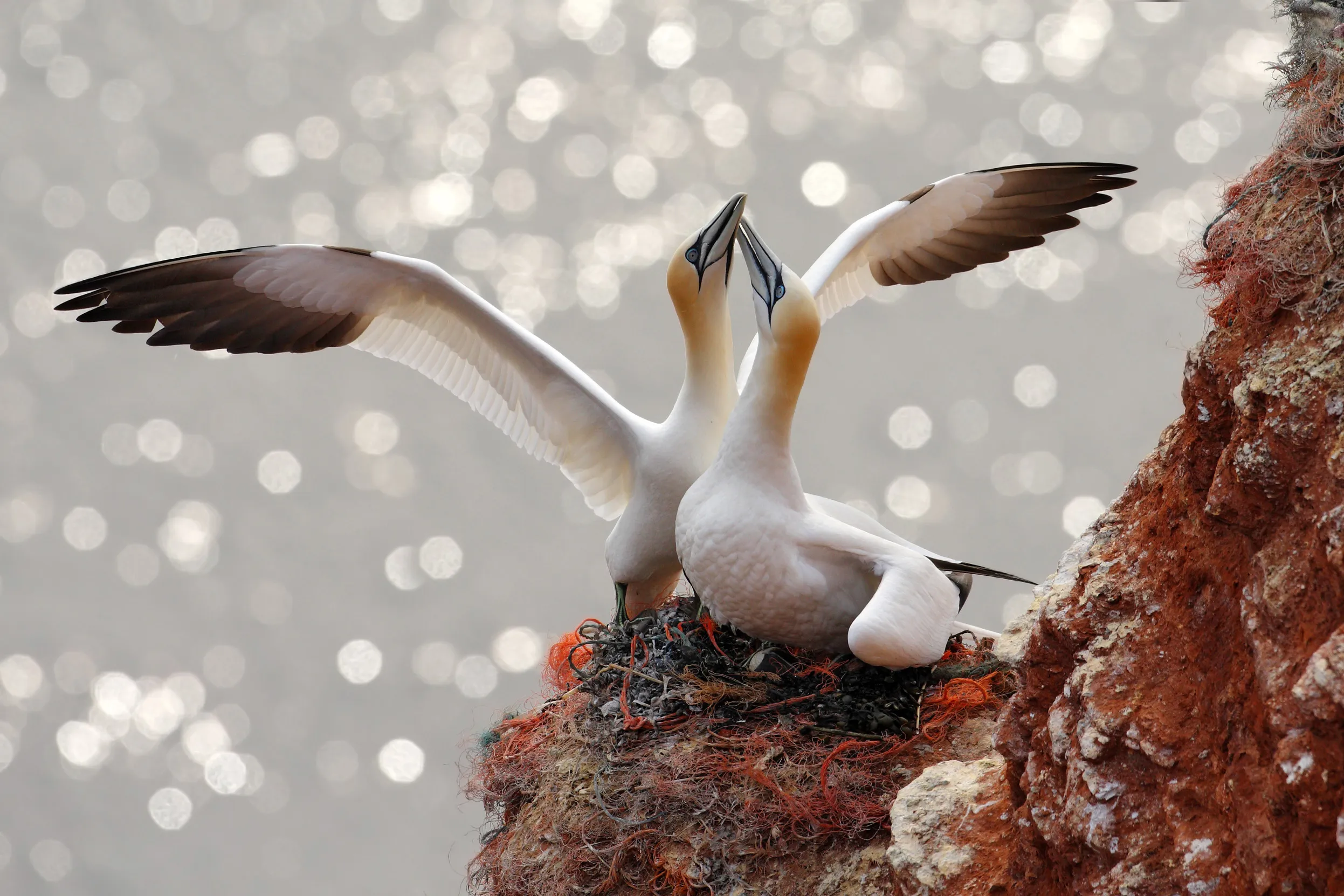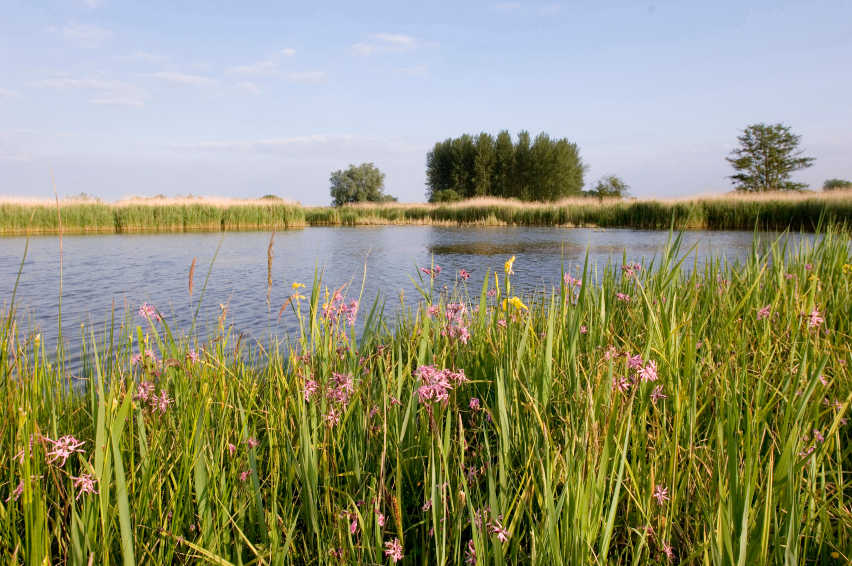EU LIFE funding
The EU’s LIFE programme has been a vital funding source for the RSPB and other UK environmental organisations since it was founded in 1992. Its grants have funded more than 30 large RSPB projects.

On this page
Due to Brexit, UK-based organisations can unfortunately no longer apply for EU LIFE grants. But, conservation is more important than ever. The RSPB is working with the UK and devolved Governments to try to secure alternative funding sources for the kind of big, practical, species- and habitat-focused projects that were once made possible by EU LIFE.
LIFE 100% Favourable
This project is working to boost the condition of key ‘features’ (i.e. habitats and species populations) on ten of the RSPB’s Scottish nature reserves. It’s called ‘100% Favourable’ because, if it’s successful, it will lead to all the most important features on our reserves in Scotland being officially classified as in ‘favourable’ condition. Most of these features are already in this category, but this project will allow us to ‘complete the set’.

The project is divided into 11 sub-projects, which are:
- On Islay and Oronsay, we’re helping Choughs by building wooden shelters for them to nest in and increasing the populations of the insects and worms they feed on.
- At Kirkconnell near Dumfries, we’re improving saltmarsh by upgrading access and making it easier for cattle to graze where needed.
- At Mersehead, also near Dumfries, we’re restoring the saltmarsh by removing scrub from dunes and using grazing to stop it returning.
- At Culbin Sands near Nairn, we’re protecting sand and shingle dunes by removing scrub and trees.
- At Loch Lomond we’ve bought a low-ground-pressure tractor to help us improve feeding habitat for Greenland White-fronted Geese.
- On Tiree, we’re removing vegetation from gravel areas used by nesting Little Terns and Ringed Plovers.
- At Inversnaid to the east of Loch Lomond, we’re installing fencing to stop deer and goats eating young trees.
- At Nigg and Udale Bay in the Cromarty Firth, we’re keeping non-native cord grass under control to stop it taking over mudflats and saltmarsh.
- On the Insh Marshes near Aviemore, we’ve introduced Konik Ponies to improve fen habitat.
- At Abernethy a few miles to the north-east, we’ve established a tree nursery to help us maintain and expand montane willow habitat.
- Also at Abernethy, we’re trialling mowing and grazing to see which is best for improving Capercaillie habitat.
LIFE Blackwit UK
Securing the future of the UK's Black-tailed Godwits is what this project is all about. We’re working in partnership with the Wildfowl and Wetlands Trust to increase the UK breeding population of Black-tailed Godwits.
Black-tailed Godwits are very rare as breeding birds in the UK and are usually only found on the Nene and Ouse Washes in Cambridgeshire (although a few birds of the Icelandic subspecies now breed regularly in Orkney and Shetland). They are also classified as ‘Near Threatened’ at the global level, because their overall population is in decline.

This project aims to:
- Help Black-tailed Godwit at the Nene and Ouse Washes breed more successfully, for example by putting up installing fences to keep predators out.
- Maintain and improve the habitat at these sites.
- Improve understanding of local and long-distance (migratory) movements of the birds breeding in the project area.
- Boost the population at the Ouse Washes through ‘head-starting’ (i.e. raising chicks in aviaries until they can fly, which makes them much less at risk from predators).
- Increase support among local communities for the conservation of Black-tailed Godwit.
- Develop a UK-wide recovery plan for the species.
LIFE on the Edge
Led by the RSPB, in partnership with the National Trust, this project is all about ensuring the survival of nine key coastal sites in eastern, southern, and north-western England, improving their condition and protecting them as much as possible from the impacts of climate change.

The works planned are:
- At RSPB Titchwell in north Norfolk, we’re managing the water levels to improve the condition of 29 ha of freshwater marsh and reedbed. We’re also creating 12 new islands for breeding and wintering waterbirds.
- At RSPB Minsmere in Suffolk, we’re protecting a 20.5-ha saline lagoon and restoring nesting islands for terns and avocets.
- At Horsey Island in northeast Essex we’re using dredgings very kindly provided by the Harwich Haven Authority to restore an eroding shingle bank. It’s a key site for a group of Little Terns and protects important grazing marshes.
- At RSPB Old Hall Marshes in the Blackwater Estuary further down the Essex coast, we’re improving the condition of 180 ha of grazing marsh and restoring nesting habitat for little terns.
- At Northey Island, also in the Blackwater Estuary, the National Trust is replacing 30 ha of intertidal habitat that’s threatened by erosion and sea-level rise.
- At Seasalter in north Kent, we’re managing the water levels of 16 ha of grazing marsh.
- At RSPB Langstone Harbour in West Sussex, we’re restoring one large island (covering 1.5 ha) and reshaping several smaller islands (covering 0.2 ha in total).
- At RSPB Hodbarrow on the Duddon Estuary in Cumbria, we’re creating a new, 0.5-ha island to provide nesting habitat for terns.
- At South Walney on the western side of Morecambe Bay, we’re working with Natural England and the Cumbria Wildlife Trust to reduce the impact of predation on breeding gulls and other seabirds.